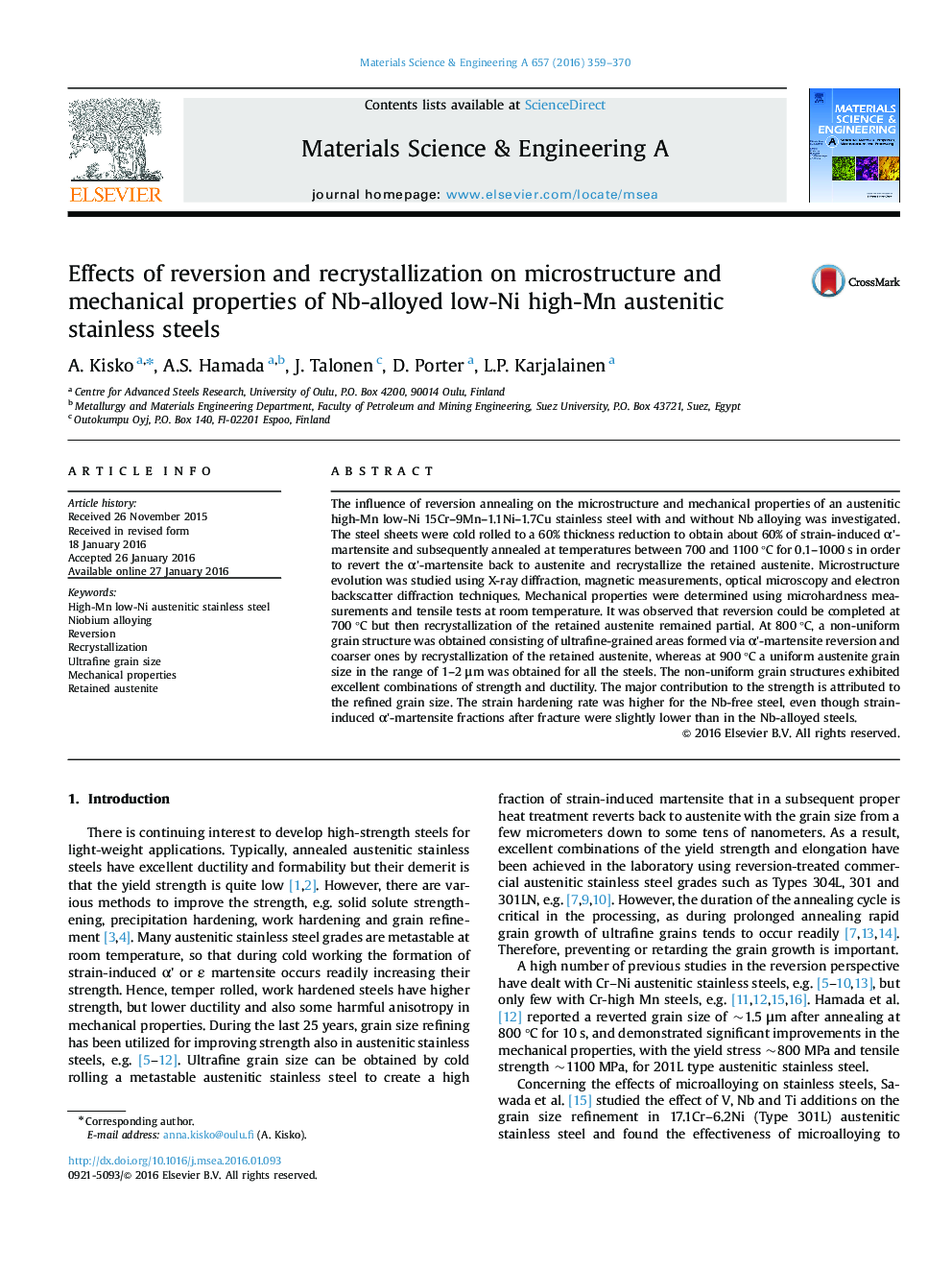| Article ID | Journal | Published Year | Pages | File Type |
|---|---|---|---|---|
| 1573758 | Materials Science and Engineering: A | 2016 | 12 Pages |
Abstract
The influence of reversion annealing on the microstructure and mechanical properties of an austenitic high-Mn low-Ni 15Cr-9Mn-1.1Ni-1.7Cu stainless steel with and without Nb alloying was investigated. The steel sheets were cold rolled to a 60% thickness reduction to obtain about 60% of strain-induced α'-martensite and subsequently annealed at temperatures between 700 and 1100 °C for 0.1-1000 s in order to revert the α'-martensite back to austenite and recrystallize the retained austenite. Microstructure evolution was studied using X-ray diffraction, magnetic measurements, optical microscopy and electron backscatter diffraction techniques. Mechanical properties were determined using microhardness measurements and tensile tests at room temperature. It was observed that reversion could be completed at 700 °C but then recrystallization of the retained austenite remained partial. At 800 °C, a non-uniform grain structure was obtained consisting of ultrafine-grained areas formed via α'-martensite reversion and coarser ones by recrystallization of the retained austenite, whereas at 900 °C a uniform austenite grain size in the range of 1-2 μm was obtained for all the steels. The non-uniform grain structures exhibited excellent combinations of strength and ductility. The major contribution to the strength is attributed to the refined grain size. The strain hardening rate was higher for the Nb-free steel, even though strain-induced α'-martensite fractions after fracture were slightly lower than in the Nb-alloyed steels.
Related Topics
Physical Sciences and Engineering
Materials Science
Materials Science (General)
Authors
A. Kisko, A.S. Hamada, J. Talonen, D. Porter, L.P. Karjalainen,
